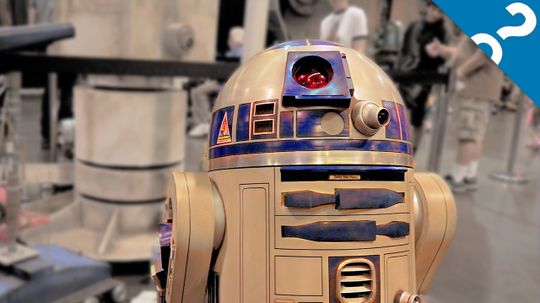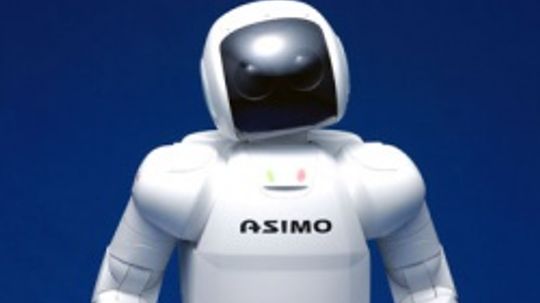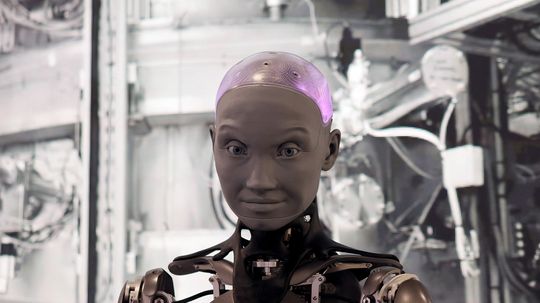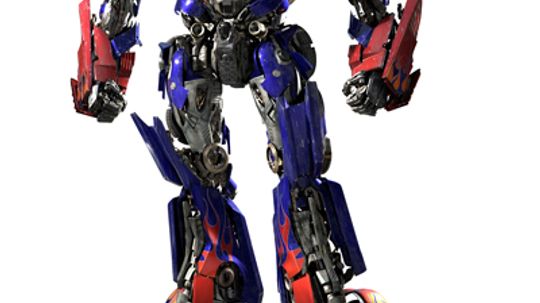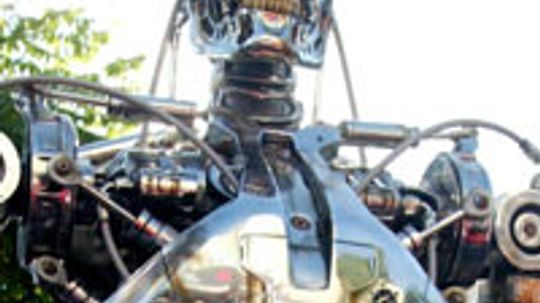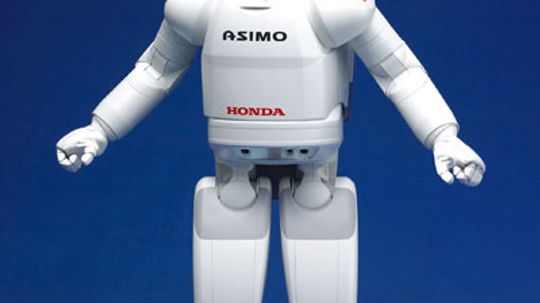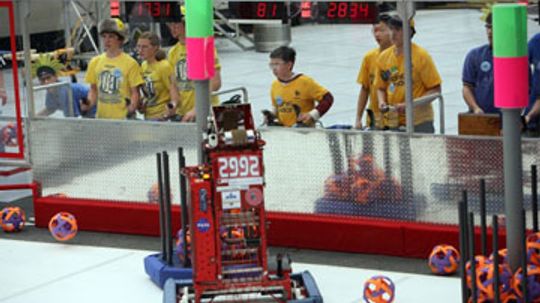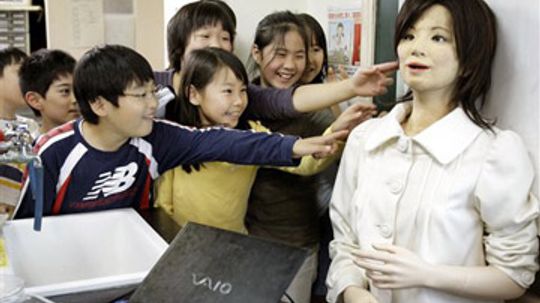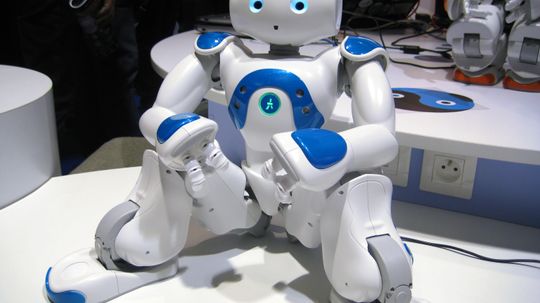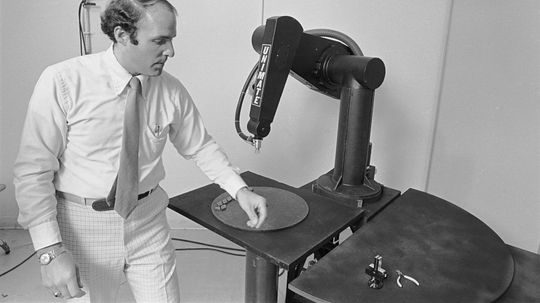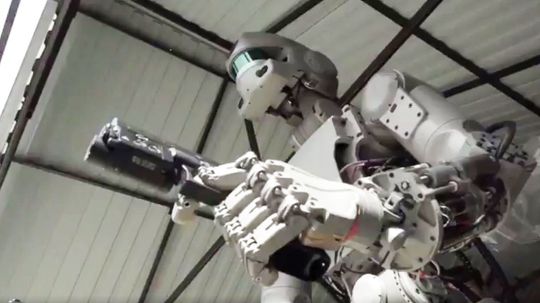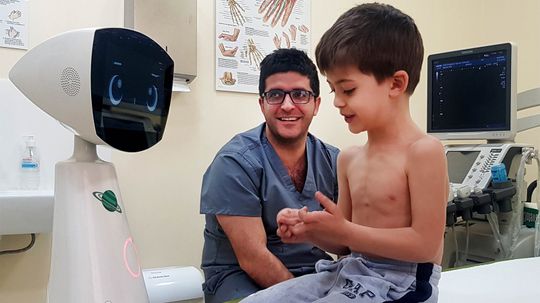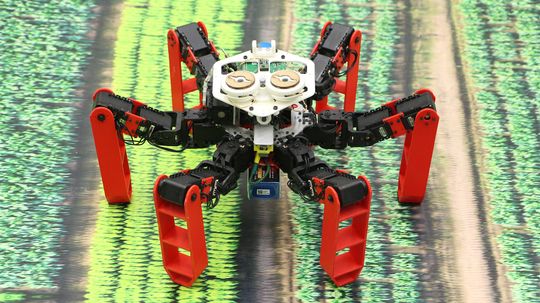Robots
Robotics is the science of creating artificial intelligence. From the simplest of automated machines to the most complex “real” transformers, robots are more ubiquitious than you might imagine.

The World's Most Awe-inspiring Glass Buildings

10 Innovative Architects to Watch

16 World-Famous Architects and Their Impact

The Steepest Road in the World, Plus 9 Rival Inclines

Here's Longest Bridge in the U.S., Plus 7 Runners-Up

10 Types of Swords for All Sorts of Circumstances

A Horrifying Russian Lathe Accident Highlights Vital Safety Protocols

How Zambonis Work

What's the Hardest Wood in the World?

10 Types of Metal (and We Don't Mean the Music)

Are food-based plastics a good idea?

What's the Scariest Roller Coaster in the World? 10 Contenders

The Tallest Roller Coaster in the World Stood for 19 Years

Tallest Building in the U.S. and 13 Other Stunning Skyscrapers
Learn More
For the first time, Israeli researchers have developed a system that lets a human use brain waves to control nanobots in a cockroach. How could that help your health?
Some "Star Wars" fans aren't content to just watch the movies. They have to bring the tech from the screen into the real world. Get the inside scoop on how creativity, ingenuity and dedication make fan-made droids come to life.
Whether they're adorable like ASIMO or creepy like the world's most lifelike androids, today's robots take on a range of shapes and sizes. But they're not all humanoid. This gallery also shows off a few that are inspired by the animal kingdom.
Advertisement
A robot and a human being are made up of the same basic components. And with each passing decade, robots become more lifelike. Find out how robots operate and the marvelous things they're already doing.
By Tom Harris & Chris Pollette
Radio controlled toys are as popular with adults as they are with kids. Get inside an RC truck and find out how it translates radio signals into motion.
By Jeff Tyson
Will we see robots with Transformers' capabilities during our lifetimes? Some existing robots have a lot in common with Transformers. Learn how.
Robot armies could soon account for up to one third of all vehicles currently in service. Learn about robot armies and robot army development.
Advertisement
It may seem like a strange idea, but one British researcher believes that by 2050, robots and humans will be able to marry legally in the United States. What social implications might this strange-sounding phenomenon have?
By Josh Clark
Bots with a badge? Police robots are no longer the stuff of sci-fi movies like "RoboCop." Some cities are using robots to patrol beats, although they're more commonly used in dangerous scenarios.
A female Android designed to look like a 20-something Korean woman is capable of making facial expressions and holding a simple conversation.
It walks, it talks and it works as a receptionist. Honda engineers have been busy creating the ASIMO robot for more than 20 years, and it shows.
Advertisement
So you like to complain about your demonic boss, moronic co-workers and fancy company coffee machine that never, ever works? You need to zip it and meet these 10 hard-working bots. They could tell you stories.
By Robert Lamb
Robots continue to work their way into every aspect of our lives, but these advancements aren't self-sustaining. The fields of robotics, engineering and science depend on a steady pipeline of young minds. And that's where FIRST comes in.
Artificial intelligence has advanced very quickly. Some believe that it's possible that machines will eventually be able to improve themselves. But could machines ever truly achieve consciousness?
Famed composer Ludwig von Beethoven died leaving just a few notes for his 10th Symphony. More than 200 years later, scientists use artificial intelligence to finish the job.
Advertisement
If we're ever going to live in a world in which machines behave like people, we humans have some teaching to do. But as this writing robot attests, we're not as far away as you might think.
"Hahaha ... we've come to destroy your world!" Or so it must read in the chapter of the "Evil Robot Handbook" on what to say when you first encounter humans. Here are 10 robots you really don't want to mess with.
Get ready to welcome your new robotic coworker. He's careful and friendly, and he's ready to learn. And he could revolutionize the manufacturing industry.
With the Campaign to Stop Killer Robots heating up, we step back a few decades to look at the first human death by robot.
By Bryan Young
Advertisement
There's more to replacing human riders than just using cool tech, as the advancement helps solve a serious human rights issue.
By Chris Opfer
The android known as FEDOR used pistols to display its decision making and dexterity, officials said, not as a preview of robot warfare.
A robot to simulate mudskipper locomotion gives scientists a look into the success of the first land vertebrate ancestors, and points to our future on other planets.
A hospital stay can be a stressful experience for anybody, and especially for a child. But a smiling new robot named Robin plays games, tells stories and comforts children in need of a friend.
Advertisement
Well, heck yeah, we can, and we have. Let's take a look.
By Robert Lamb
A new robot ant uses the same technology desert ants use to safely, efficiently navigate through the searing Saharan sun.

